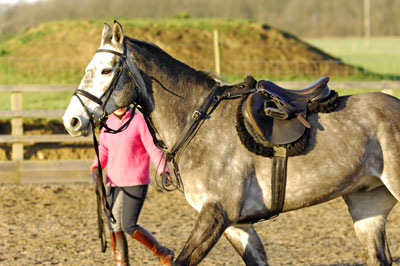Buying a youngster can be great, but it does bring responsibilities. On the one hand, you have a horse to train your way, but on the other you need the right facilities for keeping and educating him.
Keeping him at livery may pose difficulties as they’re not always geared up to youngstock, but you may find that a local stud will be able to help. This will give you the advantages of safe facilities, the right environment and knowledgeable back-up.
Young horses benefit from being able to play with others their own age, though studs often use an older horse to act as a calming influence. Turning out a youngster into a group of mature horses can be a disaster, but matching him with a sedate senior citizen in a field of their own can work.
First steps
It’s often said that only experienced people should buy and educate youngsters, but that can be a Catch-22 situation, as how do you get the experience in the first place? The answer is to buy the right type, with the right temperament, and to make sure you have support.
If you’re buying your first youngster to back, look for one with an amenable temperament. Every horse retains his natural instincts, but you’ll often find that a cob or native type will be more forgiving.
If you’re competent at handling and riding horses of different types – and have common sense and patience – you’ll find owning a youngster amazingly rewarding.
Assessing youngsters
It’s harder to assess a young, growing horse than one who’s mature. He may look perfect one month and like a gangly giraffe the next! However, some things never change.
Once a foal is around three weeks old, he should have the limb conformation he’ll grow up with. If he has long or offset cannon bones as a foal, those faults will remain throughout his life.
The angle of a young horse’s shoulder, the way his head and neck are set on and the proportional length from hip to hock will also stay more or less the same.
Take into account breed or type, too. Animals with Irish Draught, cob or native breeding will be slow to mature and won’t finish developing until they are seven or even older.
If you’re unsure, take an experienced breeder with you. Invest in a pre-purchase vetting and keep your fingers crossed – we all need luck as well as judgement!










